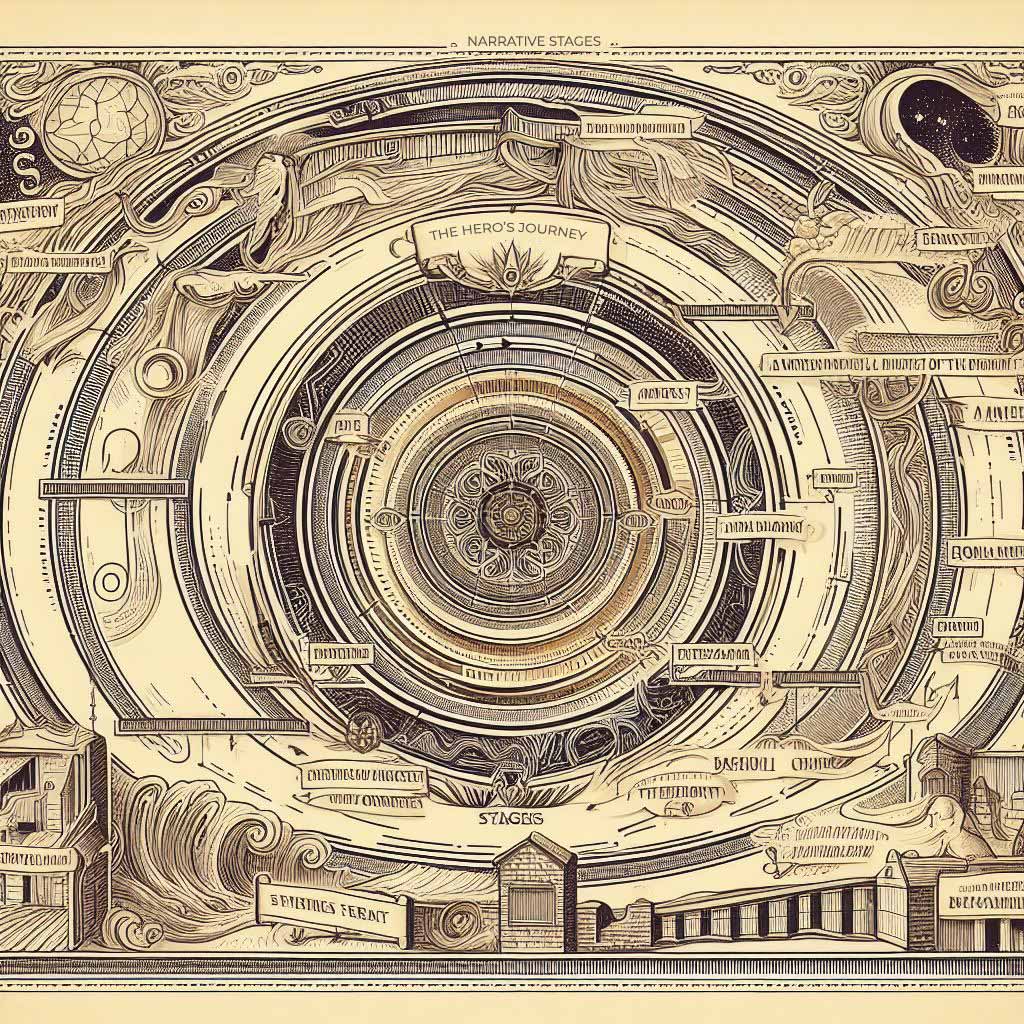If you aspire to become a professional screenwriter, learning how to craft compelling stories, nail narrative structure, and write enticing scripts should be at the top of your priority list. It takes dedication and commitment to progress from an amateur to more seasoned screenwriting skills that get your big ideas noticed.
Luckily, there are proven methods to help accelerate your screenwriting improvement so you can advance your abilities. This comprehensive guide covers the top techniques to put into practice so you can boost your screenwriting prowess.
The Importance of Screenwriting
Before diving into ways to enhance talent, it’s crucial to understand the significance of screenwriting mastery in filmmaking and entertainment media.
Powerful writing sits at the foundation of quality cinema. Iconic movies depend on exceptional scripts to establish characters, settings, dialogue, and plot direction before production ever begins.
Skillful writing creates stories that emotionally resonate with viewers. It weaves dramatic elements into resonant tales that reflect real-world conflicts, motivations, and growth arcs.
For these reasons, polished screenwriting chops unlock doors across Hollywood, streaming services like Netflix and Amazon Prime, aspiring independent productions, and beyond.
So what exactly constitutes “getting better” when it comes to screenwriting? The answer isn’t necessarily about fame or fortune, but about noticing steady improvements in core screenwriting competencies over time which lead to bigger opportunities to bring creative ideas to life.
Signs you’re enhancing screenwriting abilities:
- Crafting memorable heroes, villains, and supporting characters
- Formulating hooks and loglines that capture attention
- Plotting logical sequences of events to drive stories forward
- Penning believable dialogue
- Balancing scene descriptions, action, and more
- Improved formatting technique
Building these screenwriting muscles takes patience through ongoing applied effort. But implementing the following handy tips will help accelerate your progress exponentially.
Part 1 – Get the Screenwriting Essentials Down
If you’re serious about advancing your screenwriting abilities, start by cementing knowledge of recognized standards all quality scripts share. Think of it as understanding proper grammar before trying to pen the next award-winning novel.
You must creep before you can crawl when it comes to scriptwriting. Walk before you can run. Bolster fundamentals first and the rest will follow.
Here are the key basics to tackle:
Analyze What Makes Scripts Work…Or Fail
Writers learn from examining exemplary samples. This means reading highly regarded screenplays often, across an array of genres. Download award contenders each year or study all-time greats like Quentin Tarantino’s Pulp Fiction.
As you read, highlight moments that resonate in each act. Why did a poignant scene with two little dialogue cinematically stand out? How did the script introduce a bombshell plot twist that caught you off guard?
Also, watch inferior films and scripts with a critical eye. Train yourself to immediately spot shoddy dialogue, unrealistic settings, achievements that haven’t been earned, filtered language, and unclear character motivations. Reference both quality and not-so-quality specimens when learning to enhance technique.
Master Screenplay Format Standards
All producers and script readers expect submissions to adhere to accepted industry scripting conventions. Precision script formatting eliminates distractions so readers can focus solely on your story’s merits during evaluation.
If basics like scene headings, slug lines, transitions, character names, and parentheticals aren’t second nature, enroll in a screenwriting class or invest in formatting software like FinalDraft or WriterDuet for assistance.
These programs handle technical arranging automatically per standards put forth by the Writers Guild of America while you creatively write, allowing concentration on the plot and characters without layout worries.
Internalize Story Structure Framework
Resist any urges to “wing it” when drafting those initial promising ideas. Scribbling pure creative stream-of-consciousness passages can birth magic occasionally. But banking on sheer luck rather than understanding pivotal structural elements leaves too much to chance, especially for amateurs.
Acknowledged story framework blueprints used by iconic storytellers for generations exist for a reason. They provide foundational guidance to shape engaging beginnings, middles, and ends.
If entirely unfamiliar, deeply study the most celebrated structural design put forth by Joseph Campbell known as “The Hero’s Journey” or monomyth. This establishes necessary storytelling components, including:
- The Ordinary World
- The Call to Adventure
- Crossing the First Threshold
- Meeting Mentors and Allies
- Executing Trials, Tests, Enemies
- The Climax
- The Resolution
- The Changed Hero

Numerous derivatives stem from Campbell’s discoveries. A variation called the “Three Act Structure” constitutes another fundamental method to build archetypal stories embraced forever.
Once acquainted with classic structural guidelines, steadily integrate key elements and milestones within your original scripts. Eventually, core frameworks become second nature so less guessing is required as plots organically unfold.
Uncover Your Screenwriting Voice and Genre
Dabbling screenwriters often initially imitate the all-time greats they aim to emulate. But the end goal isn’t solely generating passable imitations. It’s uncovering and enhancing your own one-of-a-kind writing voice and strengths.
Are thoughtful dramas or smart satires where you shine brightest? Do paranormal tales, steamy romances or hilarious comedies best showcase your talents? Familiarize yourself intimately with genre conventions and tropes to determine where your distinctive flair best fits.
Also, pay attention to reoccurring phrases in dialogue, imagery preferences, scene staging similarities, and other tendencies. Isolating these personal screenwriting fingerprint elements helps cement your proprietary style so it emerges naturally. Before long, producers can spot an original “you” script immediately.
Now that essential screenwriting foundations are addressed, let’s tackle process-based habits that accelerate skills mastery…
Part 2 – Develop a Strong Screenwriting Process
Whether pursuing writing professionally or casually, regular sound screenwriting habits separate producing from procrastinating.
Carving out daily writing time proves challenging between personal responsibilities. Yet consistency remains vital. Inspiration misses those who neglect the writing chair. So be seated and ready when motivation strikes.
Here are process-focused principles to stick with:
Set Aside Specific Writing Time Daily
Protect a non-negotiable block by focusing solely on screenwriting daily—even for only an hour—no matter what. Treat this window like any other mandatory existing meeting. It’s eternally penciled into your schedule.
Exactly when is less important than keeping the appointment faithfully. Personally commit and then watch pages steadily fill.
Brainstorm Extensively Before Writing
Pre-production brainstorming blueprints screenwriting ahead by answering vital foundational questions upfront instead of mid-project. These include:
- Who is the protagonist, and what beliefs/behaviors will the journey challenge?
- What personal need or tangible goal are they pursuing?
- Who or what obstacle actively blocks the mission’s achievement?
- What loved one serves as the story’s heart helping guide the protagonist?
- What are the thematic statements being conveyed about family, friendship, beliefs, or society?
Thorough upfront brainstorming uncovers these North Star details so that throughout drafting key touchpoints remain clear. Scenes then logically build toward completely expressed concepts instead of a disjointed patchwork.
Set Milestones and Meet Them
To keep steady writing momentum, establish manageable page count or scene completion milestones to hit incrementally. Fulfilling modest goals fuels confidence to do more. Target finishing three new pages daily, or two fresh scenes. Soon writing flows freely.
Launch each session reviewing the latest pages to re-immerse within the unfolding landscape and characters. Jot notes about any new inspirations before drafting more material. Soon measurable daily achievements stack to form completed scripts.
Constantly Rewrite, Polish, and Hone
The myth of writing “once and perfectly” plagues struggling screenwriters unable to advance past draft one. But the truth is even literary greats like Ernest Hemmingway ruthlessly edited works seven to ten times before finished. Tolstoy and Twain too.

So shed beliefs that respectable writing emerges immaculately from the start. Expect to vigorously self-edit and refine, which accelerates skills exponentially. Redraft the dramatic opener six more times. Work the romantic interlude until lyrical. Be academic about self-critiquing.
Tireless polish also applies when revamping existing scripts. Revisit earlier works with fresh eyes giving new wisdom. Pushing to amplify already decent material inevitably better calibrates writing instincts. Constant refinement compounds.
Part 3: Supplement Writing Habits With Transfers of Learning
Regular screenwriting habits keep vision flowing. Further accelerating expertise requires going beyond daily sound efforts. Widen creative horizons purposefully by continually importing expanded life experience into the writing mindset.
These transfers of learning quickly compound core skills:
Absorb New Life Experiences Broadly
Embrace fresh life exposure beyond existing bubbles, then observe how people communicate, emote hopes, betray fears, or navigate relationships/hardships differently than previously understood.

Get knee-deep volunteering abroad. Master obscure talents. Routinely befriend strangers with surface-level opposing views. TRAVEL. Backpacking solo through India offers writer-transforming adversity impossible to comprehend otherwise.
The wider and deeper the living well, the greater the array of emotional colors a screenwriter pallet holds for painting resonant characters facing believable conflicts, strengthening the writing’s authenticity.
Analyze Masterful Films Repeatedly
After reading countless scripts, religiously study cinema’s crown jewels across eras noting camera work, lighting, dialogue, scoring, and set decoration conveying maximum impact. Spot how Steven Spielberg’s Jurassic Park establishes wonder, or Martin Scorsese films tension.
Repeated breakdowns sink the director’s grand visual storytelling techniques into subconsciousness. Eventually, tonal mastery unconsciously transfers into written action lines, descriptors, and stage directions.
Discuss Writing Openly With Others
Isolating while working has merits, but bouncing ideas off other skilled writers allows each to examine narrative obstacles with fresh perspectives.
The filmmaking community fosters invaluable feedback channels to mutually improve rough ideas toward greatness. Attend writers’ rooms. Swap peer notes.

Hearing profound solutions for complex corners of tangled third acts from another’s point of view can be golden. Brainstorm aloud at screenplay table reads.
Every separate vision strengthens the whole. Discussion fuels inspiration between passionate creatives. Masterminds generate ascending creative sparks.
In Closing
Advanced screenwriting abilities arrive from mixed consistent practice, focused education on formative fundamentals, and enveloping oneself within the film trade itself through lived experiences far and wide.
Internalizing classic story structure early allows organically building innovative new tales upon solid architecture without wasting months fumbling. Meanwhile constantly rewriting cements self-editing skills raising standards ever higher until prose unmistakably shines.
Lastly, remaining an open vessel gathering bountiful new life exposure transfers intriguing dimensions into fleshed cinematic worlds that readers instantly inhabit with familiarity.
Place one foot determinedly in front of the other enough times while honoring these guiding principles and untapped talents transform into riveting, original stories unfolding seamlessly off fingers, delivering that satisfaction that only the written word perfectly captures.
The long journey home begins with a single word typed. Then one more. Still one more…until fade out finally and triumphantly nears.

Frequently Asked Questions
How do I become a good screenwriter?
The main ways to become a good screenwriter include reading a lot of scripts, writing every day, taking screenwriting courses, immersing yourself within the film community, gaining life experience, and relentlessly self-editing your work before seeking feedback. It takes dedication, perseverance, thick skin, and applying proven storytelling principles over an extended time.
What is the #1 rule when writing a screenplay?
The number one rule when writing a screenplay is to make sure that it is visual and cinematic. Film is a visual medium, so the script should paint a compelling picture in the reader’s mind with descriptive, concise writing that translates powerfully to the screen.
How do you become a good screenplay writer?
You become a good screenplay writer through consistent practice, developing strong screenwriting habits daily, continual hands-on learning and growth, and pushing yourself to keep refining storytelling abilities while implementing feedback to regularly strengthen skills over time. It’s an ongoing process.
Is it hard to get a job as a screenwriter?
Yes, it is very difficult to get hired and make a consistent living solely as a professional screenwriter. The industry is very competitive with few openings compared to the number of writers vying to land sales and assignments. Building genuine contacts and proving skills via contests or indie productions helps.
What is the difference between a screenwriter and a scriptwriter?
The terms are often used interchangeably in film, though technically a screenwriter specifically writes for film and television while a scriptwriter writes scripts for broader applications like radio, theater, ads, speeches, etc beyond just screenplays. But in general practice, they refer to the same thing in the entertainment world.
Do screenwriters get paid well?
It depends greatly on whether you can sell scripts to major studios and producers compared to smaller indie budgets. But generally only working, established screenwriters garner truly high-paying salary levels. Undiscovered beginning writers earn little until establish credibility via options or sales. Writing seldom proves lucrative fast.
What is the golden rule of screenwriting?
The golden rule of screenwriting is show, don’t tell. Film is a visual medium so it relies more on dynamic, engaging imagery advancing the story rather than on excessive written explanatory exposition or on-the-nose dialogue that explicitly states understandings the audience should infer.
What is the hardest part of writing a screenplay?
For most writers, the hardest part lies in the disciplined dedication needed to fully complete an entire first draft without losing steam or succumbing to doubts. Structuring satisfying third acts also notoriously challenges many writers culminating in impactful, coherent endings. Staying motivated during long projects tests dedication.
What is the best screenwriting software?
Some of the best screenwriting software options according to many Hollywood professionals include FinalDraft, Celtx, WriterDuet, Fade In, Movie Magic Screenwriter, Scrivener and Kit Scenarist among others. Each has unique strengths, weaknesses, and pricing models. Needs vary per writer.


